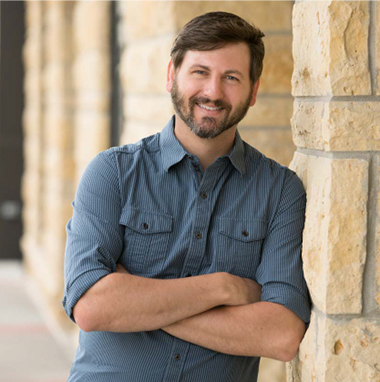Interview with a Compressionist

Name: Aaron Owen
Location: San Francisco, California
Title/role: Cofounder
Company: Cinematiq
URL: https://www.cinematiq.com
How did you get started in video compression or video streaming?
While in high school, I worked on a cable-access TV show, and the producer sent the editors to a class where we thought we’d be learning Final Cut Pro. Instead of learning about how the nonlinear editor worked, the instructor spent most of the time explaining the ins and outs of compression. He introduced us to a piece of software called Media Cleaner and reinforced that pretty much everything in digital video involves compression in one way or another. The class came with a book called QuickTime for the Web, which I read cover to cover.
What role does compression/streaming play in your daily work?
Much of what we do at Cinematiq involves preparing our clients’ content for delivery. We create DCPs for digital cinema, Blu-ray and DVD discs (yes, there’s still a market for DVDs apparently), and files for web delivery. Each of these formats requires specific compression requirements, and we pride ourselves on developing workflows to deliver our clients’ work at the highest quality possible.
What does your encoding workflow look like?
We use Adobe Media Encoder and Apple Compressor for quite a bit of what we do. They are solid tools that have really come a long way over the years. We also use a JPEG 2000 encoder from Fraunhofer called easyDCP and a garden variety of other software tools for handling files that are hard to work with.
For hardware, we use a mix of custom-built Windows PCs and Macs all sharing the same files from a NAS system.
What surprises you most about video compression today?
I’m surprised I still have to deal with legacy issues like fractional frame rates such as 29.97. I thought for sure that the future would simplify video, and in some ways it has. In other ways, the ecosystem is more complex than it’s ever been. Back in the day, there used to be only two or three video standards like NTSC and PAL. Now there’s not really anything that’s “standard.” There are about four common delivery frame sizes and something like nine common frame rates, which means there are lots more ways to skin the proverbial cat these days.
How has video compression changed in the time you’ve been working with it?
An editor I used to work with once said, “There were no good ol’ days. Everything is better now,” which I find to be true for the most part. That said, I’ve often found that the faster we make computers, the faster we figure out ways to slow them down. We are now processing images at sizes that are so much larger than what we used to. I just worked on a project where we delivered image sequences at 14k × 14k in 16 bit. That just seems nuts compared to what we were doing 20 years ago in trying to make video look good at 640 × 480. Internet speeds have gotten so much faster, which means there’s a lot less pressure to make the files as small as possible and more of a focus on delivering a quality image.
There’s also been a shift from content producers and owners compressing and delivering their own content to meet a specification to platforms like Netflix and YouTube doing most of the heavy lifting on the encoding with heavily optimized proprietary encoders. So, yeah, everything is better than it used to be.
What’s the one thing you wished you had known about video compression when you were starting out?
If I had to pick one thing, it’s probably that different encoders use a different base unit for bitrate. Some use kilobytes per second, some use megabits per second, while others use megabytes per second. But I’m not sure that there’s just one thing I wished I knew. When I was just starting out, a 30-second commercial took around 10 minutes to encode to Sorenson Video 3 with our in-house settings. In those days, I wished for faster computers so that I could run more test encodes to see with my own eyes exactly how each parameter affected the final output. Like I mentioned earlier, there was a lot of pressure to deliver really good-quality results at the smallest file size possible so that clients with limited Internet speeds wouldn’t have to wait forever to download works in progress. I wanted the ability to run lots of tests quickly because the encoders weren’t as good as they are today.
What’s the next big thing we should be watching in the world of video compression?
In the world of video compression, the only constant is that things are always changing. HDR, VR, and augmented reality are going to have a huge impact on the future technology that will be developed for compressionists. I think we’re approaching the upper limits of spatial resolution and that the next big advances will be in how to best increase temporal resolution without negatively impacting aesthetics. Rethinking temporal resolution has the ability to completely upend the entire pipeline from acquisition onset all the way to delivery. It’s an exciting time to be involved with video for sure.
